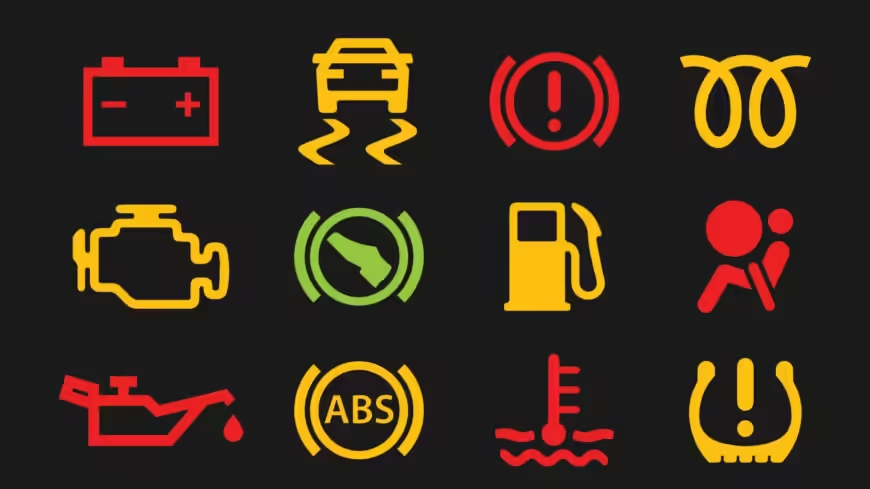Check Engine Light:
The Check Engine Light is usually a sign of an issue with the engine or emissions
system. It can be as simple as a loose gas cap or as complex as a malfunctioning
sensor. It is recommended to have your vehicle inspected by a mechanic promptly
when this light illuminates.
Battery Warning Light:
The Battery Warning Light signals an issue with the car’s charging system, which
may indicate a malfunction in the battery charging process, or a problem with the
alternator or drive belt. If this warning light illuminates, it is advisable to have your
vehicle checked to avoid a possible breakdown.
Oil Pressure Warning Light:
The Oil Pressure Warning Light is designed to alert you of low oil pressure, which
may be due to insufficient oil levels, a faulty oil pump, or a leakage in the oil system.
It is important to note that driving with low oil pressure can lead to severe engine
damage. Therefore, if this warning light illuminates, it is imperative to promptly
pull over and switch off the engine.
Coolant Temperature Warning Light:
The Coolant Temperature Warning Light illuminates when the engine is
experiencing overheating issues, which may be caused by a coolant leak, a
malfunctioning thermostat, or a faulty radiator fan. It is crucial to immediately pull
over and let the engine cool down before proceeding, as driving with an
overheating engine can result in significant damage.
Brake System Warning Light:
The Brake System Warning Light illuminates when there is an issue with the brake
system, such as low brake fluid levels, worn brake pads, or a faulty brake system
component. It is crucial to have your brakes checked immediately to verify proper
functionality.
Tire Pressure Monitoring System (TPMS) Warning Light
The Tire Pressure Monitoring System (TPMS) Warning Light illuminates to signal
that there is insufficient air pressure in one or more tires. This can potentially
impact the handling of the vehicle and reduce fuel efficiency. If this warning lightappears, it is important to promptly check the tire pressure and inflate any tires that are below the recommended level.
Airbag Warning Light:
The airbag warning light illuminates when there is an issue with the vehicle’s
airbag system, potentially hindering the proper deployment of airbags during a
collision. If this light is on, it is recommended to have a qualified mechanic inspect
your vehicle to identify the root cause of the problem.
Understanding the warning lights on your vehicle’s dashboard is crucial for quick
response to any issues that may arise while driving. Routine maintenance and
inspections can also aid in preventing common problems that activate these
warning lights.

